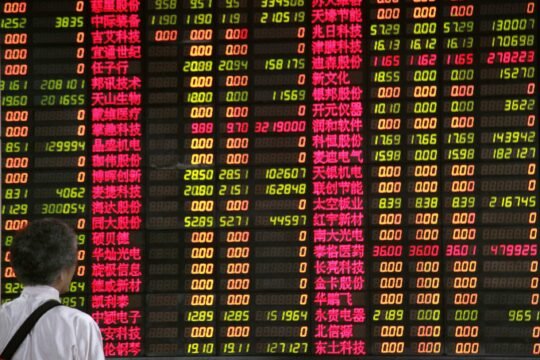August 12, 2024
New Delhi, India
In a significant shift, foreign investors withdrew a record $15 billion from China in the second quarter of 2024, reflecting growing concerns about the economic stability of the world’s second-largest economy. This unprecedented outflow highlights the mounting pessimism among international investors and has raised questions about the future of foreign investment in China.
Record Withdrawals and Investment Trends:
- Foreign Capital Outflow: According to data from the State Administration of Foreign Exchange, China’s direct investment liabilities dropped nearly $15 billion in the April-June quarter. This marks only the second time this figure has turned negative, with a similar drop of about $5 billion observed in the first six months of the year.
- Historical Context: Should this trend continue, it could result in the first annual net outflow of foreign investment since at least 1990, the year for which comparable data begins. The trend is a stark contrast to the record $344 billion in foreign investment China saw in 2021.
Impact of Economic Slowdown: The decline in foreign investment is attributed to several factors, including:
- Economic Slowdown: The ongoing economic slowdown and rising geopolitical tensions have caused foreign investors to reassess their exposure to China. The rapid shift toward electric vehicles and other technological advancements has also caught some international firms off guard, prompting them to scale back or withdraw their investments.
- Geopolitical Tensions: Increasing geopolitical tensions and trade disputes have contributed to a cautious stance among global investors, leading to reduced investment flows into China.
Adani Group Shares Plunge Up To 7% Following Hindenburg-SEBI Chief Conflicts
Chinese Outbound Investment:
- Record Outflows: Despite the retreat of foreign investors, Chinese firms have been actively investing abroad. Chinese outbound investment reached a record $71 billion in Q2 2024, up more than 80% from $39 billion in the same period last year. This surge is driven by investments in electric vehicle and battery projects, reflecting China’s strategic focus on advanced technologies.
Trade Surplus Discrepancies:
- Growing Trade Surplus: The data also reveals an anomaly in China’s trade surplus, which hit a record $87 billion in Q2 and nearly $150 billion for the first half of the year. This discrepancy has been attributed to differences in recording methodologies and an increase in production in bonded zones by foreign firms.
- IMF Report: The International Monetary Fund has highlighted this discrepancy, attributing it to changes in data recording practices by Chinese authorities and increased production by foreign firms in bonded zones.
The record outflow of foreign investment from China and the significant increase in Chinese outbound investment illustrate the complex dynamics of the current global economic landscape. As foreign investors pull back amid economic uncertainties, Chinese firms are expanding their global footprint, signaling a shift in investment patterns. The discrepancies in trade surplus data further underscore the challenges in accurately assessing economic performance and global trade flows.
Disclaimer:
CurrencyVeda provides this news article for informational purposes only. We do not offer investment advice or recommendations. Before making any investment decisions, please conduct thorough research, consult with financial experts, and carefully consider your financial situation, risk tolerance, and investment goals. Investing in the stock market carries risks, and it’s essential to make informed choices based on your individual circumstances. CurrencyVeda is not liable for any actions taken based on the information provided in this article.





